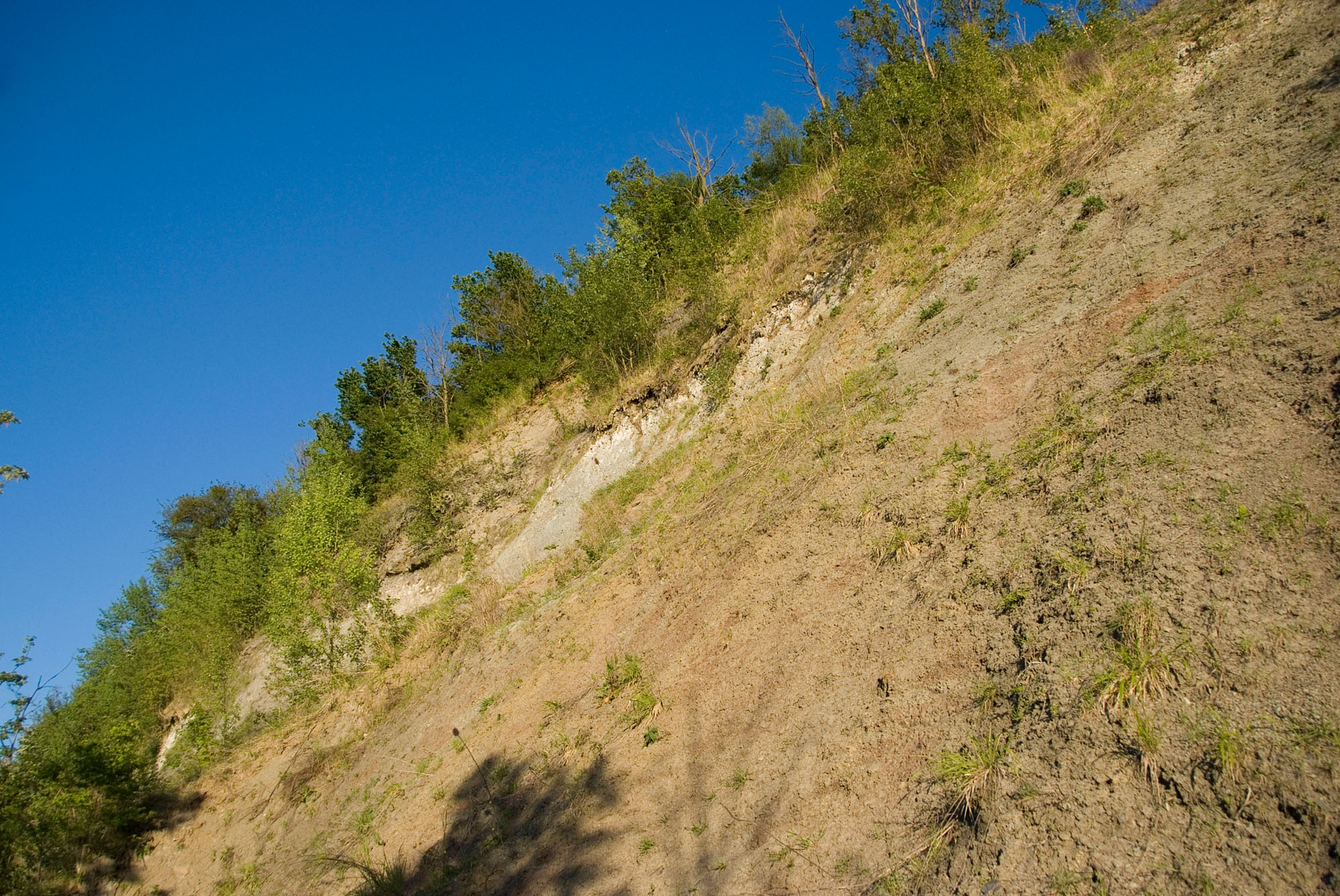Wainlode Cliff is a less popular location for collecting fossils from the Triassic bone beds of the Rhaetic aged rocks of the Westbury Formation than, for example, Aust. The cliff height is quite impressive, but the problem is this location is more overgrown than others, and does not wash out as regularly. The taller cliffs also mean that the bone bed is inaccessible and unfortunately rarely falls.
DIRECTIONS
♦ From the A38 at Norton, take the road through the village and then to Bishops Norton. Continue along the road, which will descend a steep hill. Round the bend, you will see a large pub (the Red Lion) with a large car park and tables outside.
♦ Part of the car park is for customers of the pub only, so use the part, which is not signposted to this effect. This location can be very busy at weekends and evenings, as the pub is very popular with locals.
♦ From here, the cliffs can be accessed very easily from the grass area with tables.
♦ Ref: 51.93002°N, 2.22592°W
PROFILE INFO
FIND FREQUENCY: ♦♦ – The lack of regular falls and with most of the cliff overgrown, the chance of finding fossils is low. If you can find shale, then you may be able to find some brachiopods, but blocks of the bone bed are hardly ever seen.
CHILDREN: ♦♦♦♦ – This location is suitable for children, but keep them away from the base of the cliffs. The water is quite shallow here and there is a family pub right next to the cliffs.
ACCESS: ♦♦♦♦♦ – Park in the pub car park (but not in the part signposted just for customers) and simply walk to the cliffs. This is a quick and easy locality to find.
TYPE: – Fossils are found in the blocks of bone bed from the top of the cliffs and the fallen shale in the scree slopes.
FOSSIL HUNTING
There are several locations along this section of the River Severn where the Triassic Mercia Mudstone Group make up the bulk of the cliff, with the famous bone bed above this and Lower Lias at the very top.
The problem is that the bone bed rarely falls and most of the cliff is overgrown, especially at the end where the Upper Triassic rocks of the Westbury Formation dip down. However, bones of fish, shark and reptiles, similar to those found at Aust and Westbury-on-Severn, can be found. Within the ‘Bone Bed’, fish scales, teeth and coprolites are the most common finds. Black shale often contains small brachiopods of Triassic age.
An oyster bed can also be found at the top of the Jurassic Lias sequence. There is also some black shale that contains small brachiopods of Triassic age.
Where the cliffs start to become overgrown, there are usually some rocks to examine and areas of shale where fossils can also be found. However, fossils are not as common here as other locations and after visiting others along the Severn, this may be a disappointment unless you are lucky enough to visit after a very uncommon cliff fall.


GEOLOGY
As with many other similar locations, the lower and bulk of the cliff is composed of various layers of the Mercia Mudstone Formation and these are unfossiliferous.
It is the top part of the cliff that contains fossils. The Westbury Formation (Rhaetic age), containing the ‘Bone Bed’ and the oyster bed of the Lower Lias, are at the top.


SAFETY
This location does not have the extensive mudflats as other locations along the River Severn. It also has shallower water, but the cliffs rarely fall and the tide often does not reach the base of the cliff. However, it can still be dangerous. You should keep away from the cliffs as they can crumble. Use common sense at all locations.
EQUIPMENT
You will require a hammer, a chisel and eye protection to split the bone bed, although lumps of it are not very common. For the shale, a splitting pick will be ideal.
ACCESS RIGHTS
This site is a site of special scientific interest (SSSI). This means you can visit the site, but hammering the bedrock is not permitted. For full information about the reasons for the status of the site and restrictions, download the PDF from Natural England.
It is important to follow our ‘Code of Conduct’ when collecting fossils or visiting any site. Please also read our ‘Terms and Conditions‘
LINKS
♦ Buy Fossils, Crystals, Tools
♦ Location Discussions
♦ Deposits Magazine
♦ Join Fossil Hunts
♦ UK Fossils Network




















